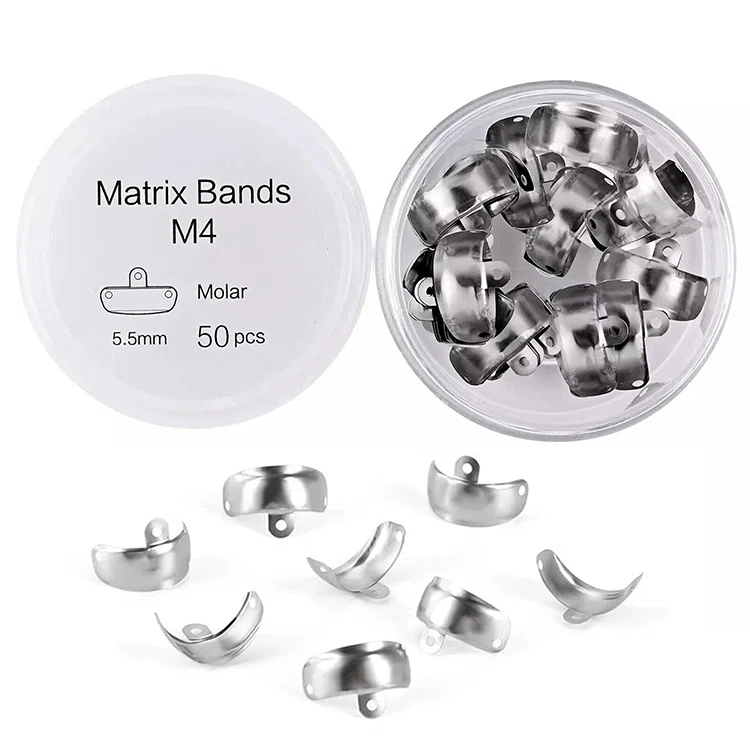
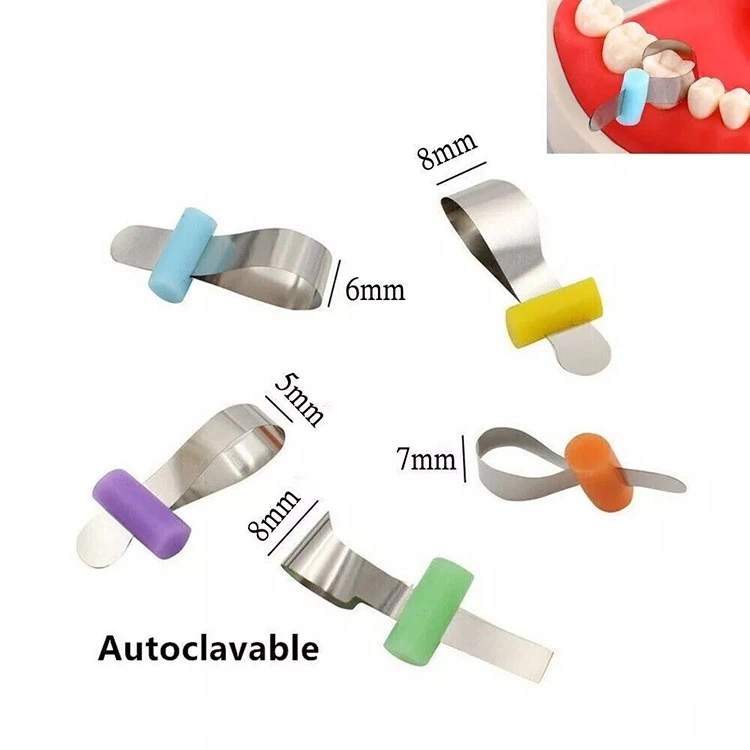
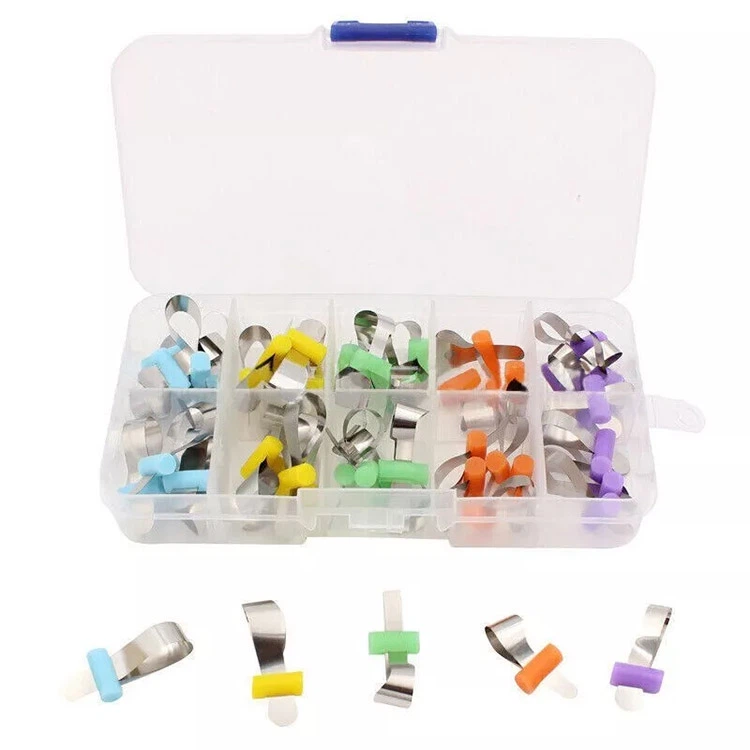
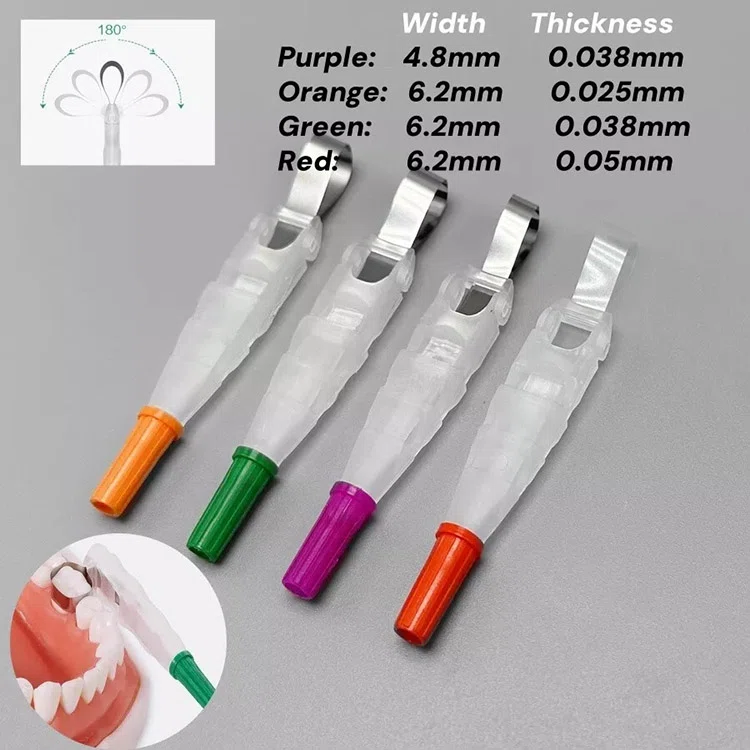
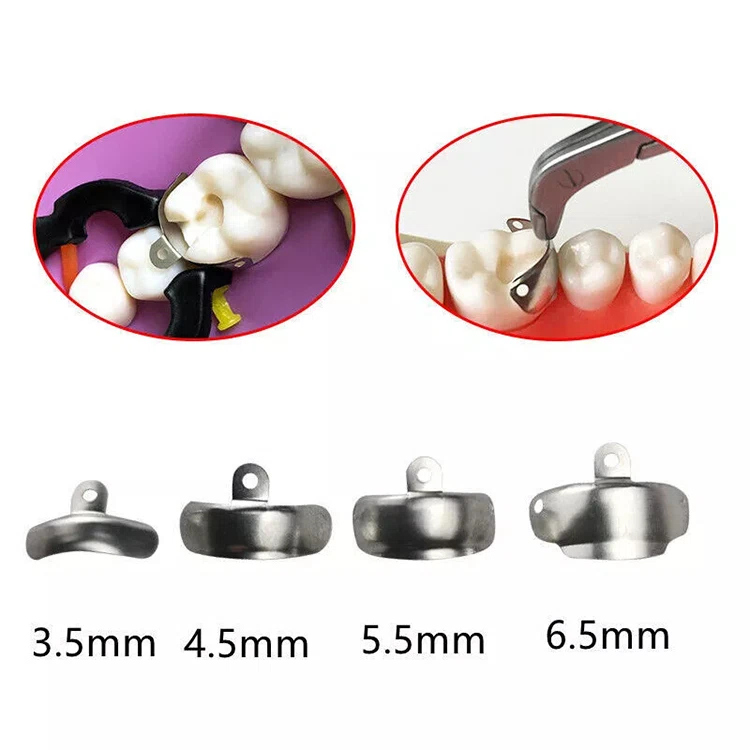
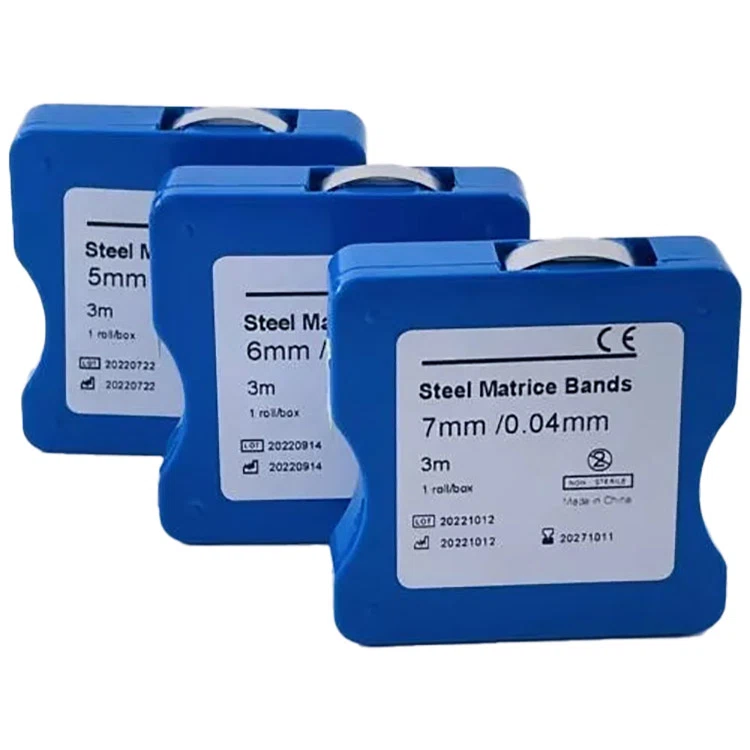
Bandas de matriz dental
- Matirial reforzado especial asegura la fuerza y la elasticidad apropiadas
- Buena elasticidad y dureza, Buena fuerza de sujeción, invariabilidad después de un uso repetido
- La curvatura más grande puede envolver y colocar el diente de manera más estable
- El material de resina tiene buena elasticidad y resistencia., no se deforma
- Autoclavable
Las bandas de matriz son dispositivos de plástico de acero inoxidable o de grado médico utilizados en la restauración dental y los tratamientos de ortodoncia. Crean paredes de contención temporales alrededor de los dientes para ayudar a moldear y dar forma a los materiales restauradores durante los procedimientos clínicos.
Las bandas de matriz proporcionan un límite y forma claros alrededor del diente., Permitir que el material restaurativo se llene con precisión en el área designada, dando como resultado una restauración de forma dental ideal.
Categoría de bandas de matriz
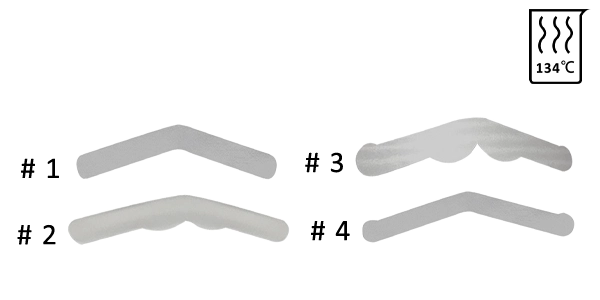
| ancho: #2 espesor: 0.04mm(0.0015") |
| ancho: #2 espesor: 0.05mm(0.002") |
| estándar, #1 espesor: 0.04mm(0.0015") ancho: 6.5mm |
| estándar, #1 espesor: 0.05mm(0.002") ancho:6.5mm |
| ancho #3 espesor: 0.04mm(0.0015") |
| ancho #3 espesor: 0.05mm(0.002") |
| ancho #13 espesor: 0.04mm(0.0015") |
| ancho #13 espesor: 0.05mm(0.002") |
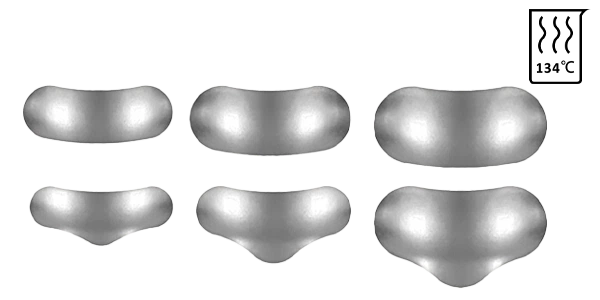
| No.1, Duro, Premolar, Ancho: 4.5mm, Espesor: 0.038mm |
| No.2, Duro, Molar, Ancho: 5.5mm, Espesor:0.038mm |
| No.3, Duro, Molar alto, Ancho: 6.5mm, Espesor: 0.038mm |
| No.4, Duro, Permolar con extensión, Ancho: 5mm, Espesor:0.038mm |
| No.5, Duro, Molar con extensión, Ancho: 6.5mm, Espesor:0.038mm |
| No.6, Duro, Molar alto con extensión, Ancho: 8.5mm, Espesor: 0.038mm |
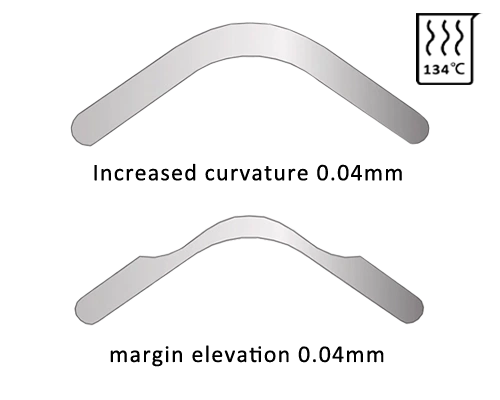
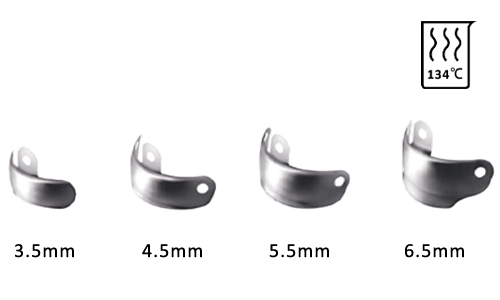
Bandas de matriz seccional GD-5694
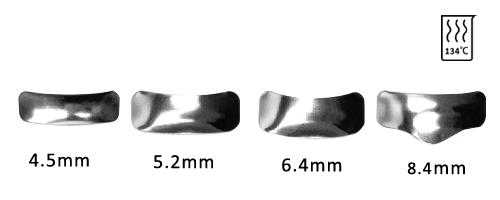
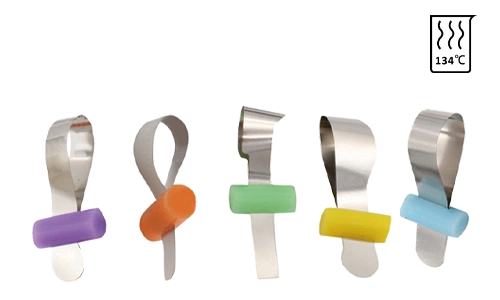
Productos autoclavables solamente
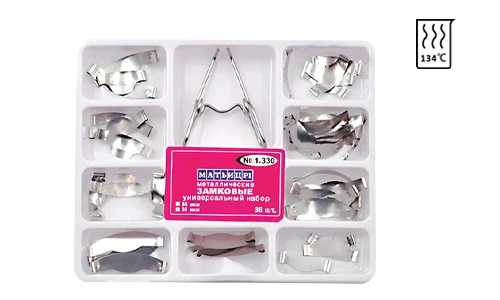
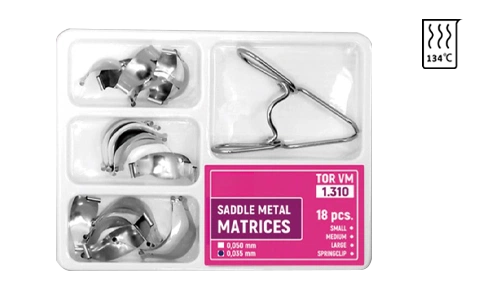
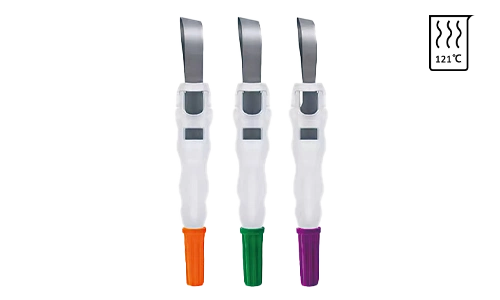
Retenedor y matriz GD-5702
| Acero inoxidable |
| Naranja: Amplio 6.2 mm, espesor 0.025 mm, Sin ala o con ala |
| Verde: Amplio 6.2 mm, espesor 0.038 mm, Sin ala o con ala |
| Púrpura: Amplio 4.8 mm, espesor 0.038 mm, Sin ala o con ala |
| Rojo: Amplio 6.2 mm, espesor 0.075 mm, Sin ala o con ala, Mylar |
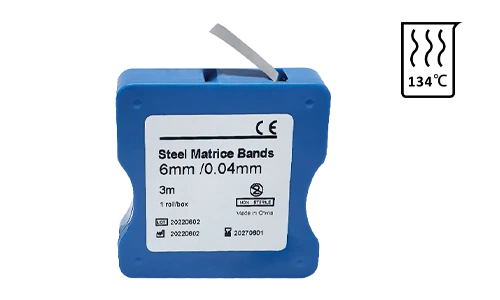
| ancho: 5mm, espesor: 0.025mm, longitud: 3metro |
| ancho: 5mm, espesor: 0.04mm, longitud: 3metro |
| ancho: 5mm, espesor: 0.05mm, longitud: 3metro |
| ancho: 6mm, espesor: 0.025mm, longitud: 3metro |
| ancho: 6mm, espesor: 0.04mm, longitud: 3metro |
| ancho: 6mm, espesor: 0.05mm, longitud: 3metro |
| ancho: 7mm, espesor: 0.025mm, longitud: 3metro |
| ancho: 7mm, espesor: 0.04mm, longitud: 3metro |
| ancho: 7mm, espesor: 0.05mm, longitud: 3metro |
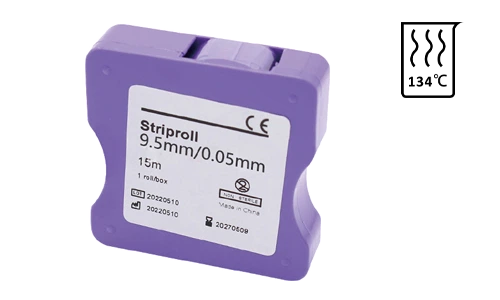
Las bandas de matriz están disponibles en diferentes tamaños y formas dependiendo de los dientes del paciente para elegirlos, Ayudar al dentista a controlar con precisión el resultado restaurador. Las bandas de matriz también se pueden usar junto con cuñas dentales Para controlar el grosor del material restaurativo, evitar que el material de llenado sea demasiado grueso o demasiado delgado.
Con avances en tecnología médica, El diseño de bandas de matriz se volverá más inteligente, Aumento adicional de la precisión y efectividad en las restauraciones. La evolución de la ciencia de los materiales también conducirá a bandas de matriz construidas con materiales más nuevos que son más cómodos y duraderos.. Más detalles, Por favor contáctenos.
Los tipos de bandas de matriz dental.
Bandas de matriz seccionales
Las bandas de matriz seccionales son las más adecuadas para restauraciones de cavidades de Clase II y Clase III., especialmente los dientes posteriores. Sus arcos prediseñados pueden adaptarse bien a la estructura anatómica de los dientes., creando un contacto proximal natural y previniendo la protrusión. Están hechos de acero inoxidable delgado y resistente y pueden mantener la estabilidad en espacios estrechos.. Esto es crucial para la unión de materiales compuestos utilizados en empastes dentales..
Bandas de matriz circunferencial
Circular (círculo completo) Las bandas de matriz se utilizan para una restauración de cobertura total y se pueden aplicar a la preparación de coronas o al postratamiento de cavidades grandes de Clase I.. Fabricado en acero inoxidable o plástico desechable., Ofrece soporte envolvente de 360° para garantizar una colocación uniforme del material y contornos de reparación..
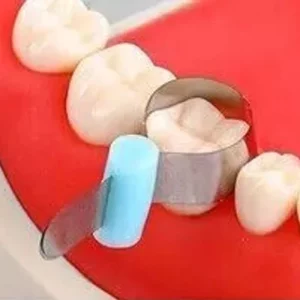
Bandas de matriz de retención
A menudo se utiliza en situaciones en las que la preparación de coronas de dientes posteriores y restauraciones a gran escala requieren un tiempo quirúrgico relativamente largo.. También ofrece soporte envolvente de 360° y viene con un diseño de bloqueo incorporado., eliminando la necesidad de cuñas dentales para ayudar en el soporte. Pueden proporcionar un mantenimiento del estado a largo plazo., esperando que la restauración complete el curado.
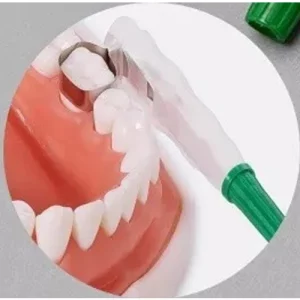
Tira de resina
Resin Strip Roll es una especie de banda matriz hecha de plástico., que se corta tanto como sea necesario. Además, El rollo de tiras de resina es para un solo uso.. No es necesario considerar la limpieza y desinfección después de su uso.. Es muy conveniente y ahorra tiempo..
Por qué los dentistas confían en nuestras bandas dentales Matrix
- Seguro y estéril: Todas nuestras cintas base cumplen con los estándares FDA y CE.. Todos se someten a una estricta esterilización antes de salir de fábrica y todos admiten esterilización a alta temperatura y alta presión.. Para prevenir la infección cruzada, También se recomienda esterilizar estrictamente antes y después de cada uso..
- Durabilidad: La banda de matriz de acero inoxidable puede resistir muy bien la deformación durante la colocación y extracción., y aún puede garantizar un rendimiento excelente después de un uso repetido.
- Alta precisión: Nuestra banda de matriz se somete a múltiples procesos de prensado de bordes para garantizar una fina, bordes lisos y sin rebabas. Puede crear un ambiente herméticamente sellado., prevenir la fuga de materiales de empaste dental, y reducir la incidencia de sensibilidad dental postoperatoria y caries secundaria..
Cómo utilizar correctamente las bandas de matriz dental
Seleccione el tipo y tamaño apropiados:
Después del examen, basado en la película de rayos X y la posición del diente que necesita ser obturado. Seleccione el tipo y tamaño de la banda de matriz dental. Si es necesario rellenar caries profundas de los molares posteriores, lo mejor es elegir bandas retenedoras Matrix, que puede mantener un estado estable durante mucho tiempo. Si se trata de un defecto en forma de cuña de los premolares, Las bandas Matrix seccionales se pueden utilizar en combinación con cuñas interdentales para cooperar. Esto se debe a que los premolares tienen un buen campo de visión y el área del defecto en forma de cuña es relativamente pequeña., y sólo es necesario rodear una parte del cuerpo del diente.
Colocación segura:
Cuando se utiliza la banda matriz para estabilizar el área periodontal, asegúrese de que esté al ras con el borde de la encía y no aplique fuerza excesiva para evitar que se incruste en la encía y cause molestias al paciente..
comprobar el contorno:
Antes de rellenar el material de restauración., asegúrese de que el contorno rodeado por la banda de matriz sea completo y natural, y encaja bien con el diente. Evite que el llenado excesivo o insuficiente obstaculice el tratamiento posterior.
Eliminación cuidadosa:
Después de que el material de reparación haya curado, Retire suavemente la banda de matriz.. Luego verifique el área del borde para determinar el efecto de reparación..
Resuelva los puntos débiles relacionados con las bandas de matriz.
Según los comentarios de nuestros clientes., Hay tres desafíos principales en la optimización.
1. Dificultad en la adaptación espacial.:
Durante la restauración de caries interproximales de molares., la banda de matriz no puede caber en el espacio estrecho o bloquea el campo de visión operativo cuando se inserta.
Plan de optimización: Nuestras bandas de matriz seccional GD-5696 se han actualizado y diferenciado en seis modelos según la investigación del tamaño de los molares y el espacio interdental de miles de pacientes.. Para especificaciones detalladas, por favor consulte la tabla de arriba. Básicamente cubre 90% de los pacientes’ muestras molares. Ya no tendrás dificultades para elegir a la hora de realizar la restauración de molares interproximales..
2. Problema de fuga de borde:
Después del llenado, siempre se encuentra que hay destellos o incluso grandes protuberancias en el borde de la unión, lo que requiere mucho tiempo para el posterior pulido y esmerilado. Fue causado porque el borde de la lámina formada no estaba bien sellado..
Plan de optimización: Este tipo de problema se debe principalmente a una presión de bloqueo insuficiente de la lámina de formación.. A veces, cuando se utilizan cuñas interdentales como ayuda, la presión es desigual, lo que provoca un sellado insuficiente de los bordes y un desbordamiento del material de reparación. Las bandas de matriz de retención GD-5702 que desarrollamos posteriormente pueden resolver este problema de manera efectiva. Puede proporcionar un bloqueo envolvente de 360° y mantener una presión uniforme durante mucho tiempo..
3. Durabilidad del material:
Las láminas ordinarias de acero inoxidable se deforman después de ser desinfectadas tres veces.
Plan de optimización: Actualice a material de acero inoxidable médico 316L, compatible con esterilización por vapor a alta presión de 134 ℃, mantener la estabilidad de la forma después 20 ciclos de esterilización.
Preguntas frecuentes
Para restauración de dientes anteriores., se puede hacer referencia al diámetro del diente: para incisivos centrales, elige el tipo pequeño (ancho 5-6mm), y para caninos, elija el tipo estándar (6-7mm). Los espacios interproximales de los dientes posteriores deben medirse con sondas periodontales.
- Acero inoxidable (como GD-5696) : Adecuado para la zona de los dientes posteriores que soporta la fuerza de mordida.. Un espesor de 0,051 mm proporciona un soporte fuerte, pero cabe señalar que la frecuencia de desinfección no debe exceder 8 veces (de lo contrario, el borde es propenso a deformarse).
- Aleación con memoria (GD-5692) : La opción preferida para la restauración estética de los dientes anteriores., se puede doblar a 90° y rebotar automáticamente, especialmente adecuado para casos con curvas complejas del margen cervical.
- Acero inoxidable común: Se recomienda esterilizar a 121 ℃.. Después de más de 10 ciclos, la fuerza de sellado del borde disminuirá en 37%, y necesita ser reemplazado a tiempo.
- Acero inoxidable 316L de grado médico: Admite una esterilización rápida a 134 ℃ y mantiene la estabilidad de la forma después 20 ciclos.
Prefiere tipos suaves y seguros., como el rollo de tiras de resina GD-5699. Es una banda matriz hecha de material de resina y la presión generada no es demasiado intensa.. Es adecuado para pacientes como niños cuyos dientes no están completamente desarrollados..

